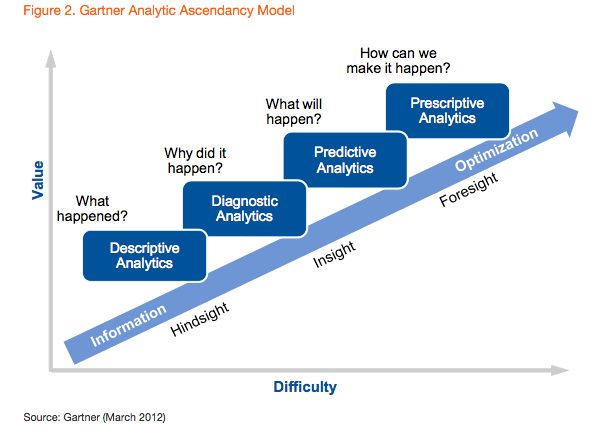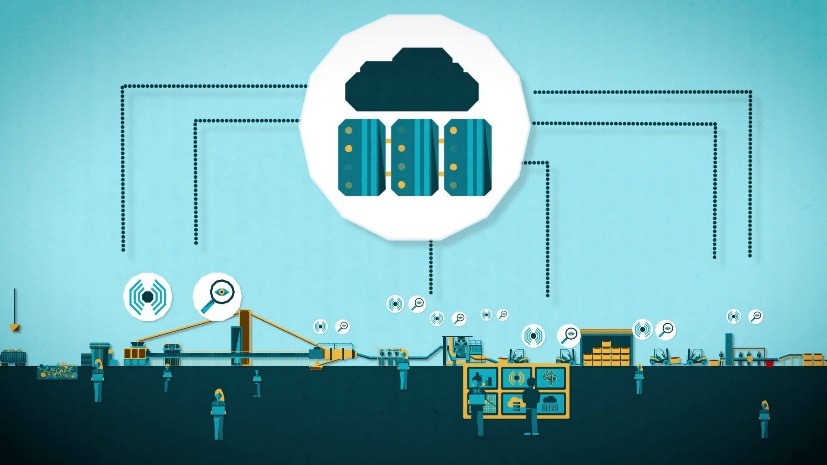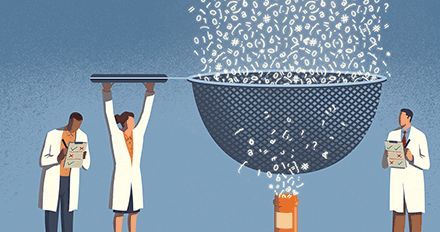Acrux predictive analytics
According to Doctor of Psychology Robert Cialdini, the amount of data that surrounds us now, the number of decisions and choices that need to be made daily, force us to significantly simplify the decision-making process. Thus, our brain, which once raised man over the animal world, is now forced to be guided by simple algorithms, almost reflexes, when making decisions.
The era of the Internet of Things, when we are able to collect terabytes of data about the condition of our body, the operation of equipment in production, photos and video from surveillance cameras, further complicates the task. There is so much data that we can process only a tiny fraction of it. Evolution did not prepare our brains for such amounts of information.
Algorithmic decision making (if A> B then do C) also does not always help. There are too many parameters, dependencies are not always linear and such decision-making systems become too simplified and rough.
Fortunately, with big data, there are ways to work with it. Neural networks and other methods of machine learning, computer vision, natural language processing allow every minute to process thousands of photos, data from hundreds of sensors and classify objects in real time and offer solutions to difficult situations.
Predictive analytics
Machine learning methods provide predictive analytics that optimize business processes and avoid equipment downtime and breakdowns.

According to research company Gartner predictive analytics answers the question “What will happen?”. This allows you to prepare in advance for an upcoming event, or take steps to avoid it. To better understand how predictive analytics works and how it can be applied to your processes, consider several different use cases implement of predictive analytics.
Predictive breakdown analytics for predictive maintenance

In one of the projects, we were faced with the task of predicting breakdowns of various units of construction equipment. The specified time frames did not optimally determine the frequency of equipment maintenance. Sometimes the standard recommendations were too frequent and then there was an additional expense and machine downtime, sometimes it was rare and then the cars broke down. This was due to the different nature of the operation of the equipment (intensity, professionalism of workers, etc.), different external conditions (climatic, nature of work). Based on data on previous breakdowns and a certain amount of current telemetry data, we built a model that significantly increased the accuracy of the forecast about the need for repairs. This allowed both to improve sales of service maintenance and to reduce the costs of construction companies. Thus, as a result of applying the algorithm, everyone won.
Weather as a important factor
Weather factors have a great influence on many events. Studies show that even the number of crimes is significantly dependent on the weather, which makes it possible to more optimally determine the workload on the police and the patrol plan. Our experience has made it possible to accurately determine the increase in the incidence of colds in people depending on changes in the weather (temperature, humidity, wind, etc.). This was used to predict the workload of medical professionals and the supply of necessary drugs to pharmacies.
The weather influences energy consumption even more significantly. A properly designed model, taking into account consumption patterns and the peculiarities of the station's operation, saves significant resources and money when heating buildings and generating electricity. Rigorous “one-size-fits-all” algorithms are too crude and lead to resource overuse, increased CO2 emissions, and equipment wear.
Predictive analytics in medicine
Another important area where the use of predictive analytics qualitatively improves processes is medicine.

Our bodies are too different from each other, each has its own medical history and characteristics, so a universal solution is not always equally effective. Over time, the analysis of the genome will make it possible to give more detailed recommendations for treatment, but even now the analysis of the condition with available means can significantly increase the effectiveness of treatment. We have described our personalized medicine solution in more detail in a separate article. Here, we note that the collection and analysis of data from medical equipment using machine learning makes it possible to simplify the work of staff, identify possible complications in advance, and take into account a huge number of factors when prescribing treatment. An additional advantage of using systems with machine learning is that over time they become more and more “smart”, as they learn from new data every day, increasing the accuracy of their predictions.
AI is the key to efficiently processing big data
To work effectively in a data surplus environment, you need to work with modern tools. Automated data processing by artificial intelligence frees up human resources for a deeper analysis of the situation and making the most optimal decisions. Just as construction machinery enhances our physical capabilities, machine learning techniques enhance our analytical and cognitive abilities. With artificial intelligence, the decisions made will be supported not only by the experience of one person, but by the entire history of similar events and taking into account the influence of many third-party factors.
Our data scientists are highly qualified and ready to analyze your business processes to improve their efficiency.


